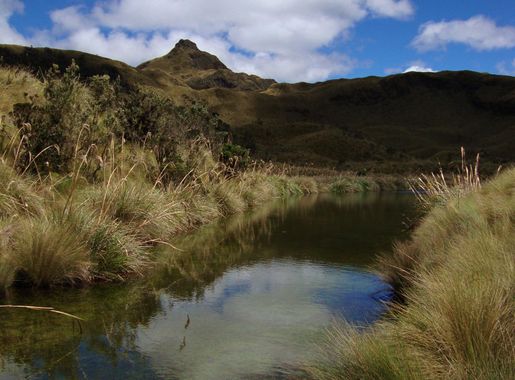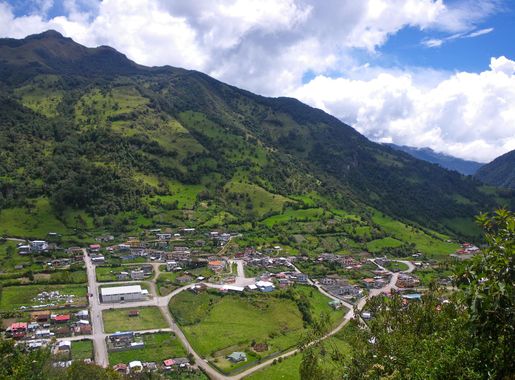
Papallacta Hot Springs: Ecuador's Thermal Paradise
Discover relaxation and natural beauty at Papallacta Hot Springs, Ecuador's premier destination for therapeutic waters, scenic hikes, and local cuisine.
Nestled in the Andean highlands, Papallacta Hot Springs offers a serene escape from the hustle and bustle of city life. Just a short drive from Quito, these hot springs are renowned for their therapeutic properties and stunning natural surroundings. The mineral-rich waters are perfect for relaxation and rejuvenation, making it an ideal spot for travelers seeking a tranquil retreat. Aside from soaking in the warm waters, visitors can enjoy the breathtaking views of the surrounding mountains and lush greenery. The area is a haven for nature lovers, with numerous trails for hiking and opportunities for birdwatching. Keep an eye out for native species like the Andean condor and hummingbirds that frequent the region. In addition to the hot springs, Papallacta boasts a range of accommodations from luxurious spas to cozy lodges. Culinary enthusiasts will also appreciate the local cuisine, which features fresh trout from nearby rivers and traditional Ecuadorian dishes. Whether you're looking to unwind, explore, or indulge, Papallacta Hot Springs has something for everyone.
Local tips in Papallacta Hot Springs
- Visit early in the morning or late in the afternoon to avoid crowds and enjoy a more peaceful experience.
- Bring a swimsuit, towel, and a change of clothes, as the weather can be unpredictable.
- Don't miss the chance to try the local trout dishes at nearby restaurants.
- Consider booking a spa treatment for an enhanced relaxation experience.
- If you enjoy hiking, explore the nearby trails for stunning views and wildlife encounters.
Papallacta Hot Springs: Ecuador's Thermal Paradise
Nestled in the Andean highlands, Papallacta Hot Springs offers a serene escape from the hustle and bustle of city life. Just a short drive from Quito, these hot springs are renowned for their therapeutic properties and stunning natural surroundings. The mineral-rich waters are perfect for relaxation and rejuvenation, making it an ideal spot for travelers seeking a tranquil retreat. Aside from soaking in the warm waters, visitors can enjoy the breathtaking views of the surrounding mountains and lush greenery. The area is a haven for nature lovers, with numerous trails for hiking and opportunities for birdwatching. Keep an eye out for native species like the Andean condor and hummingbirds that frequent the region. In addition to the hot springs, Papallacta boasts a range of accommodations from luxurious spas to cozy lodges. Culinary enthusiasts will also appreciate the local cuisine, which features fresh trout from nearby rivers and traditional Ecuadorian dishes. Whether you're looking to unwind, explore, or indulge, Papallacta Hot Springs has something for everyone.
When is the best time to go to Papallacta Hot Springs?
Iconic landmarks you can’t miss
Virgen del Paramo Papallacta
Experience the tranquil beauty and cultural richness of Virgen del Paramo Papallacta, a serene museum nestled in the Andes of Ecuador.

Papallacta Hot Springs Reservations Office Quito
Discover the healing waters and stunning landscapes of Papallacta Hot Springs, an oasis of relaxation near Quito, Ecuador.
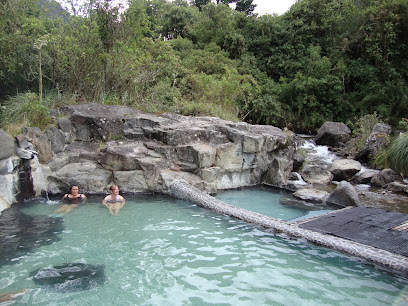
Mirador 1 Papallacta
Discover the breathtaking beauty of Mirador 1 Papallacta, where stunning Andean vistas and serene nature create an unforgettable experience for every traveler.
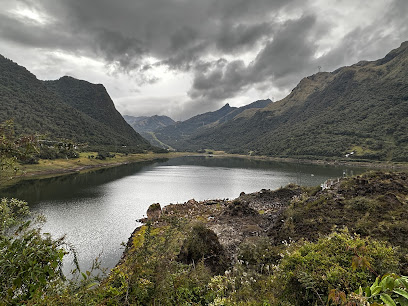
El Mirador de Papallacta
Experience stunning views and relaxing hot springs at El Mirador de Papallacta, a breathtaking tourist attraction in the heart of Ecuador's Andes.

Laguna Papallacta
Discover the tranquility of Laguna Papallacta, a stunning swimming lake in the Ecuadorian Andes, perfect for relaxation and breathtaking views.
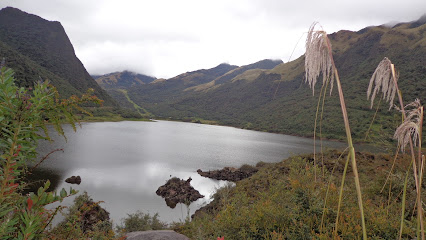
Unmissable attractions to see
Cochasqui Archaeological Park
Discover the ancient civilization of Cochasqui at this remarkable archaeological park, offering breathtaking views and rich cultural insights.
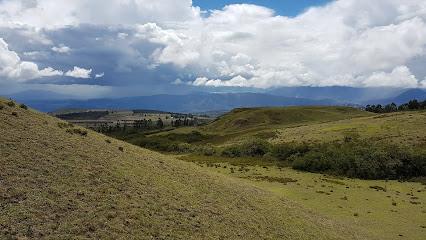
Condor Machay Cascadas
Explore the stunning beauty of Condor Machay Cascadas, a nature preserve in Quito, featuring breathtaking waterfalls and diverse wildlife.
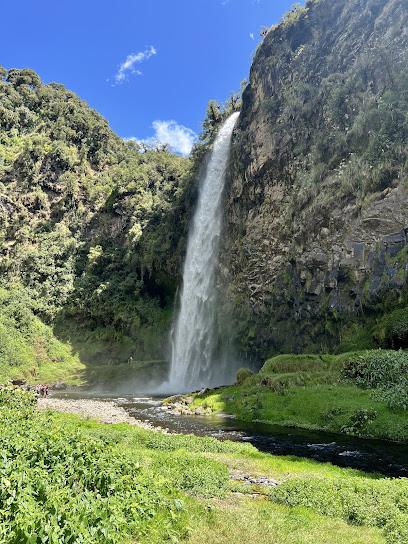
La Tejedora Distrito Creativo
Discover the vibrant heart of Quito at La Tejedora Distrito Creativo, a cultural shopping hub filled with local art, crafts, and delicious cuisine.
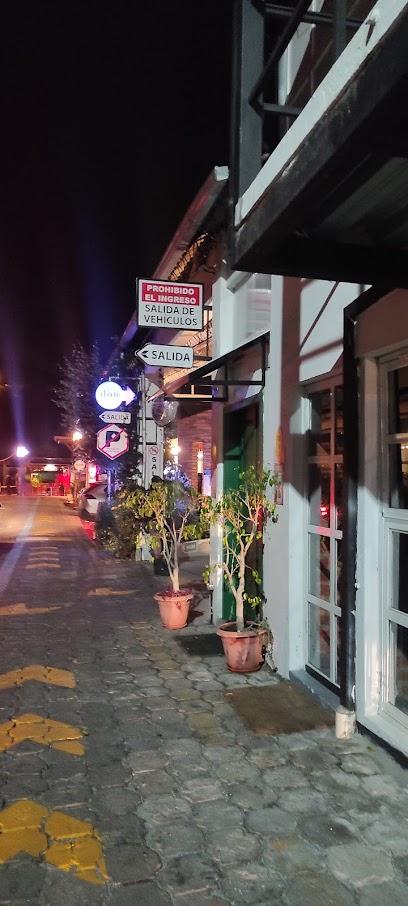
Checkpoint Cayambe Coca Ecological Reserve
Discover the breathtaking beauty and biodiversity of Checkpoint Cayambe Coca Ecological Reserve in Ecuador, a must-visit for nature lovers and adventurers.
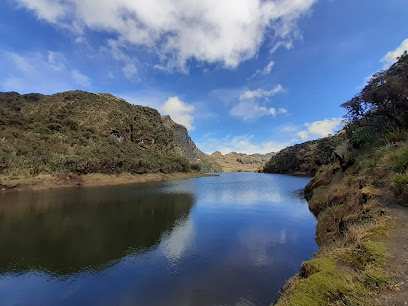
República del Cacao
Discover the essence of Ecuadorian chocolate at República del Cacao, a delightful café in Quito's Mall El Jardín, perfect for all chocolate enthusiasts.
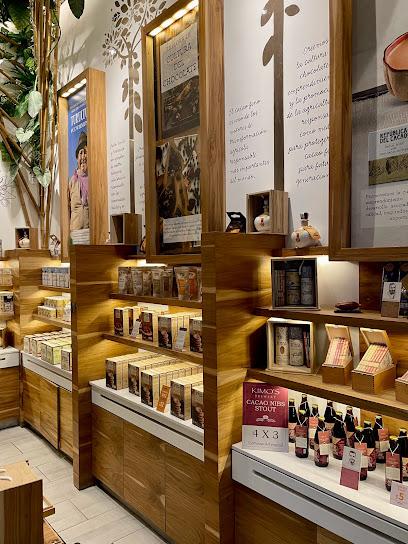
Mirador 1 Papallacta
Discover the breathtaking views and serene atmosphere at Mirador 1 Papallacta, a stunning viewpoint in the Andes of Ecuador.
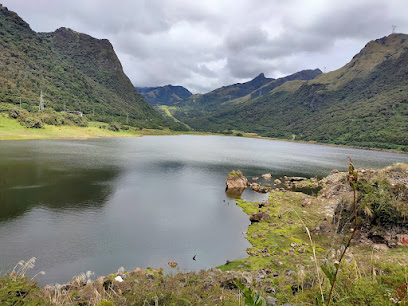
Antiguo Círculo Militar
Uncover Ecuador's military history at Antiguo Círculo Militar, a captivating museum showcasing rich artifacts and historical narratives in Quito.
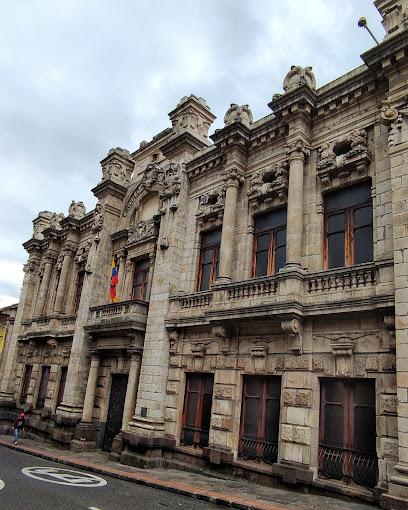
Papallacta Antennas
Explore the enchanting landscapes of Papallacta Antennas, a premier nature preserve near Quito, Ecuador, renowned for its breathtaking beauty and wildlife.
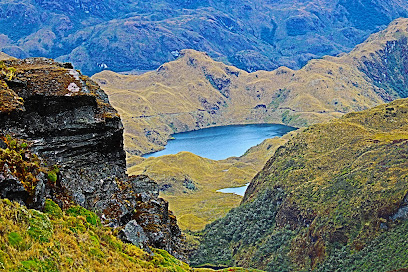
Milagrosa Waterfall
Explore the captivating Milagrosa Waterfall in Papallacta, a serene nature preserve that showcases Ecuador's stunning natural beauty.
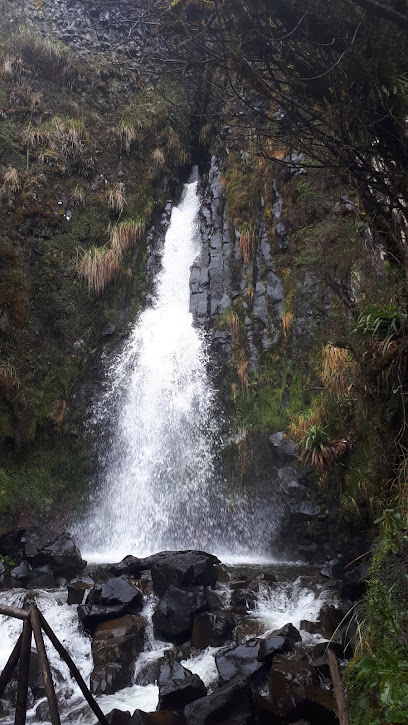
SACHAYACU
Discover the natural beauty and cultural richness of Sachayacu in Papallacta, Ecuador—an unforgettable tourist attraction in the breathtaking Andes.
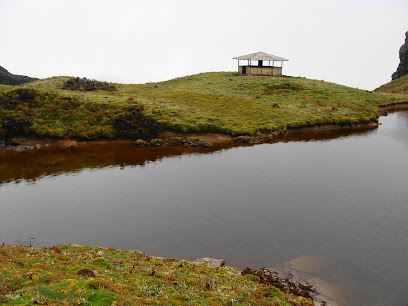
Rutal del Cóndor
Discover the breathtaking trails of Rutal del Cóndor, a hiking paradise nestled between Quito and Papallacta, rich in nature and wildlife.
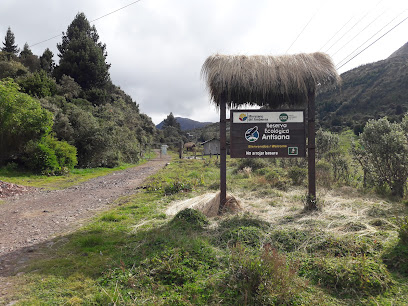
Sendero de la Isla (Island Trail) - Rancho del Cañón
Discover the breathtaking landscapes and rich biodiversity of Sendero de la Isla, a premier hiking destination in Baeza, Ecuador.
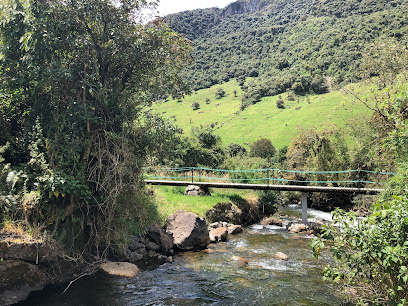
Letras Corpóreas QUIJOS
Explore the colorful Letras Corpóreas QUIJOS in Papallacta, a vibrant tourist attraction blending art and nature in breathtaking Ecuador.

Pesca San Jose
Explore Pesca San Jose in Papallacta - a tranquil fishing haven surrounded by breathtaking Andean views and rich natural beauty.
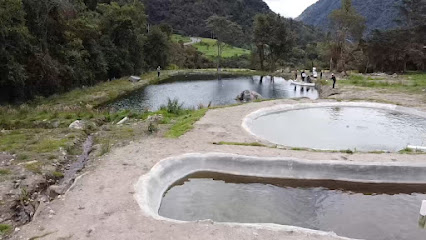
Finca Arcoiris
Explore the breathtaking trails of Finca Arcoiris in Papallacta, a hiking paradise surrounded by stunning mountain views and rich biodiversity.
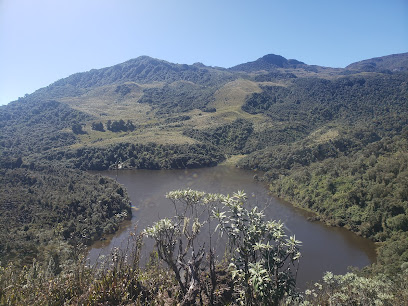
Essential places to dine
Restaurante Mi Lagunita Papallacta Ecuador
Experience authentic Ecuadorian cuisine with stunning Andean views at Restaurante Mi Lagunita in Papallacta.
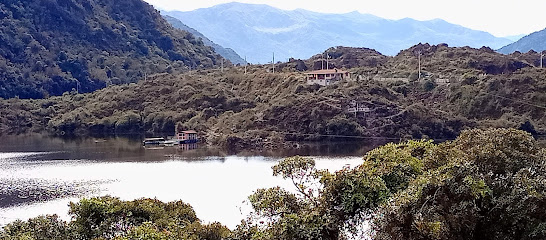
Restaurant El Refugio
Discover authentic Ecuadorian flavors at Restaurant El Refugio in Papallacta - a culinary gem for every traveler.
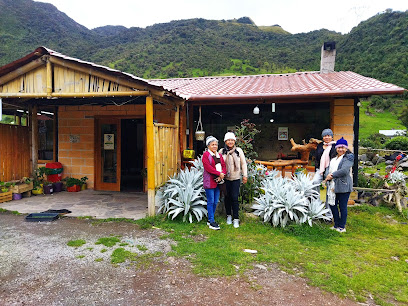
NAHOMY - Pizzeria - Restaurante
Experience the rich flavors of Ecuador at NAHOMY - Pizzeria - Restaurante near Papallacta's famous thermal baths.
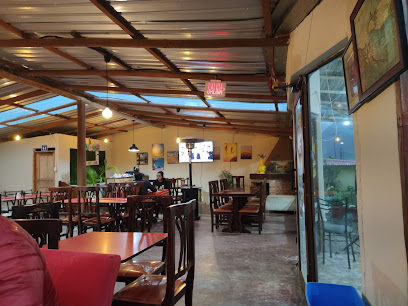
Restaurante Paisaje de los Andes
Experience authentic Ecuadorian cuisine amidst stunning Andean scenery at Restaurante Paisaje de los Andes in Papallacta.
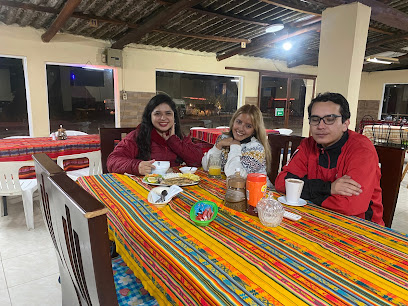
El Leñador
Discover authentic Ecuadorian flavors at El Leñador in Papallacta – where culinary tradition meets warm hospitality.

Markets, malls and hidden boutiques
Papallacta Hot Springs
Discover the natural beauty and therapeutic waters of Papallacta Hot Springs, a perfect escape for relaxation and adventure in the Ecuadorian Andes.
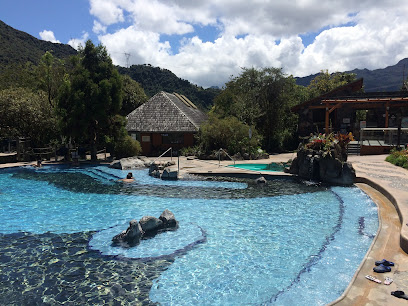
Termas Papallacta Hotel Spa
Discover the perfect blend of relaxation and adventure at Termas Papallacta Hotel Spa, where natural hot springs meet stunning Andes landscapes.
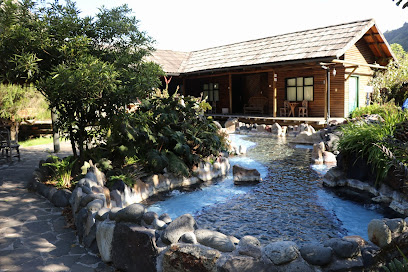
Hosteria Pampallacta Termales
Experience the healing powers of nature at Hosteria Pampallacta Termales, where relaxation and stunning landscapes await.

Termales Jamaco
Discover the serene thermal baths of Termales Jamaco in Papallacta, where relaxation meets stunning natural beauty in Ecuador's breathtaking landscapes.
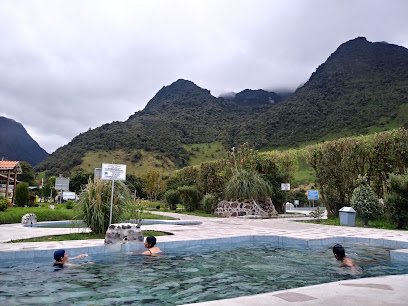
Virgen del Paramo Papallacta
Immerse yourself in Ecuador's rich culture and history at Virgen del Paramo Papallacta, a museum nestled in the stunning landscapes of the Andes.
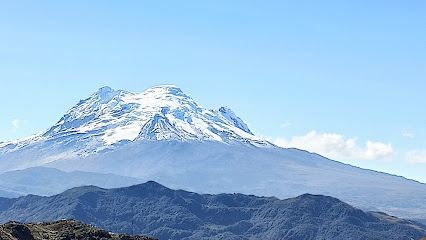
El Alisar, Cafeteria
Experience the cozy ambiance and rich flavors of Ecuadorian coffee at El Alisar, Papallacta's favorite espresso bar.

Termas Sachayacu
Discover the rejuvenating thermal waters and stunning landscapes of Termas Sachayacu, a serene retreat in the heart of Papallacta, Ecuador.

Hostal Antisana
Experience the serene beauty of Papallacta at Hostal Antisana, your perfect retreat in the heart of the Andes.

Termas de Papallacta
Discover the healing hot springs of Termas de Papallacta, a tranquil escape in the Andes perfect for relaxation and adventure.
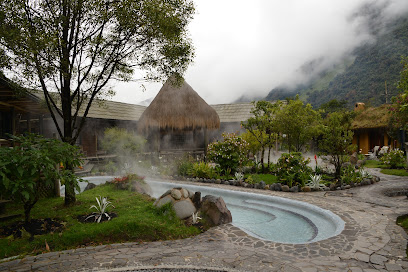
La Pintora de macetas
Discover the artistic charm of La Pintora de Macetas, a unique gift shop in Quito with handmade pottery, local crafts, and a scenic garden setting.
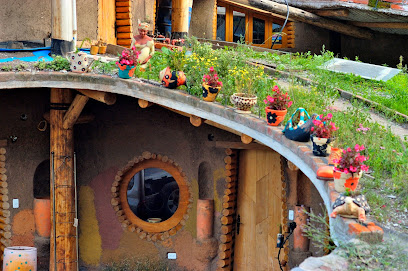
Tienda Palugo
Discover the essence of Ecuadorian cuisine at Tienda Palugo, a charming grocery store in Pifo offering fresh produce and local delicacies.
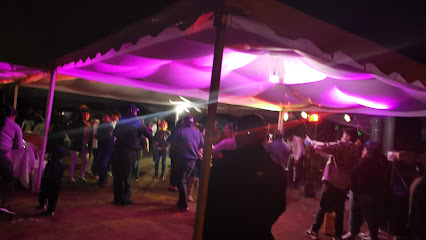
Mujer Elegante UIO
Explore Mujer Elegante UIO for exquisite women's footwear and clothing, blending elegance with modern trends in the heart of Ecuador.

Su Bazar
Explore Su Bazar in Puembo for a unique gift shopping experience filled with local artisan treasures and cultural souvenirs.
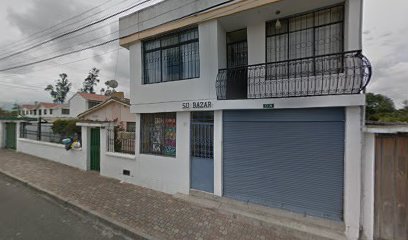
El Paso del Pescador
Explore the best fishing gear and expert advice at El Paso del Pescador, your ultimate destination for fishing adventures in Papallacta, Ecuador.

Dannys Boutique
Explore Danny's Boutique in Pifo for exclusive clothing and accessories that blend modern trends with Ecuadorian culture.
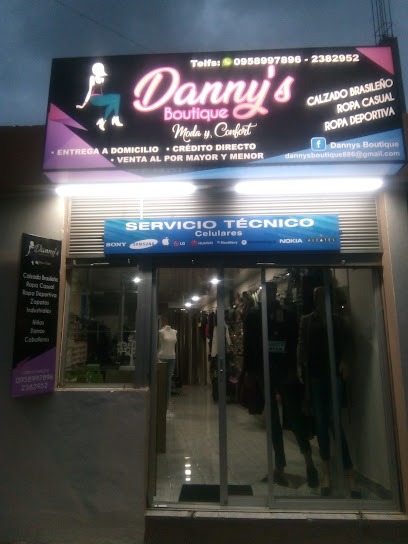
Essential bars & hidden hideouts
Termas Papallacta Hotel Spa
Experience the soothing thermal waters and stunning views at Termas Papallacta Hotel Spa, a premier resort nestled in the Andes of Ecuador.
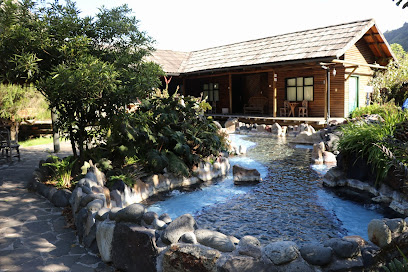
Hosteria Pampallacta Termales
Experience the tranquil beauty of Hosteria Pampallacta Termales, where natural hot springs meet the serene Andes for an unforgettable escape.

Hostal don WILSON
Experience authentic Ecuadorian cuisine at Hostal Don Wilson, surrounded by the breathtaking Andes mountains in Papallacta.
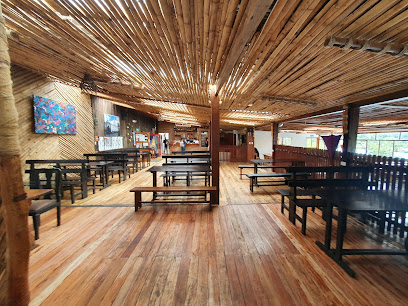
Restaurante Mi Lagunita Papallacta Ecuador
Experience the authentic taste of Ecuador at Restaurante Mi Lagunita in Papallacta, where tradition meets breathtaking mountain views.
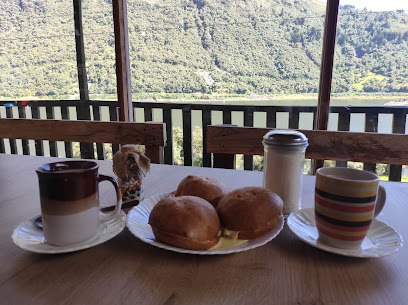
La Quiteñita - Hostal & Restaurant
Experience the warmth of Ecuadorian hospitality at La Quiteñita, where delicious cuisine and cozy accommodations await in the heart of Papallacta.
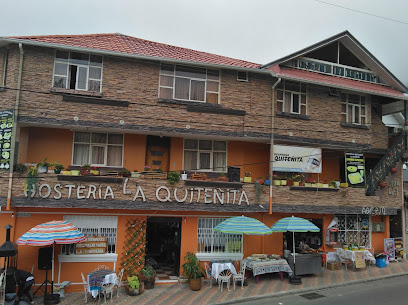
Restaurant El Refugio
Experience authentic Ecuadorian flavors at Restaurant El Refugio in Papallacta, where local ingredients meet traditional recipes in a cozy atmosphere.
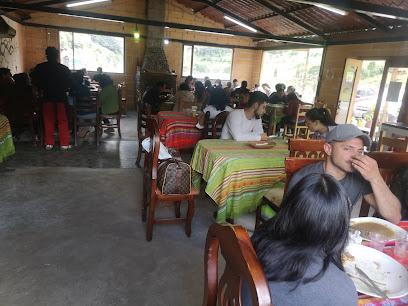
Mamallacta Paramo Lodge
Experience the ultimate retreat at Mamallacta Paramo Lodge, where comfort meets nature in the heart of Ecuador's stunning landscapes.

Restaurant La Sabrosura de Lucy
Discover the flavors of Ecuador at La Sabrosura de Lucy, a family-friendly restaurant in Papallacta, perfect for a delightful dining experience.
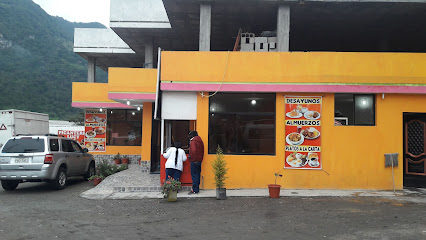
Termas El Arriero
Discover relaxation at Termas El Arriero in Papallacta, where natural thermal springs rejuvenate your soul amidst stunning Andes scenery.
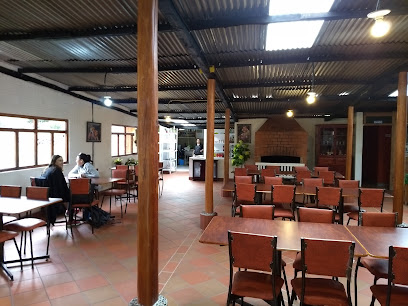
El Descanso
Discover the rich flavors of Ecuador at El Descanso in Papallacta, where traditional cuisine meets breathtaking mountain views.
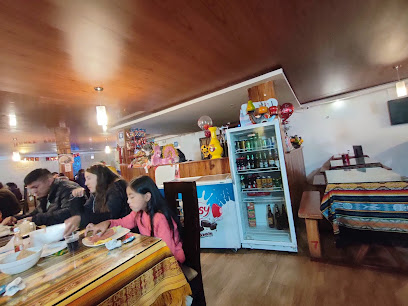
El Paraiso
Experience the essence of Ecuadorian cuisine at El Paraiso, a charming restaurant in the heart of Papallacta, surrounded by breathtaking natural beauty.

hostal & Restaurant El Fogon Campero
Experience the charm of Ecuador at Hostal & Restaurant El Fogon Campero, a family-friendly haven with breathtaking views and delicious cuisine.
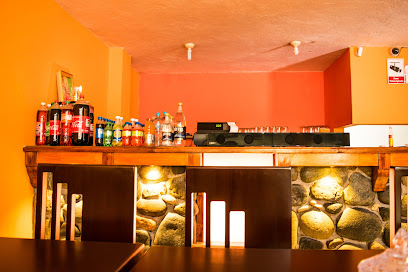
NAHOMY - Pizzeria - Restaurante
Indulge in delicious pizzas and local dishes at NAHOMY, the perfect dining spot near Papallacta's rejuvenating thermal baths.
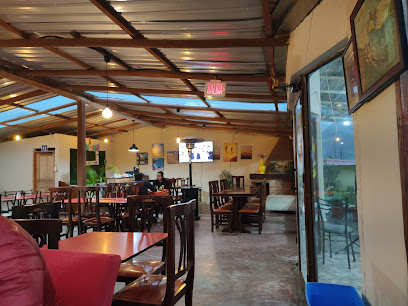
Restaurante Paisaje de los Andes
Experience the authentic flavors of Ecuador in a picturesque setting at Restaurante Paisaje de los Andes in Papallacta.
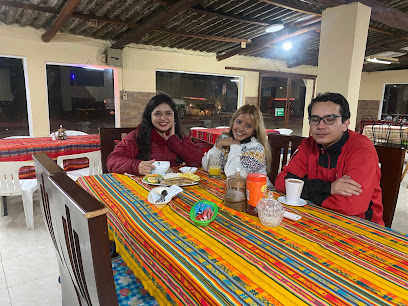
Resto bar Alejandra sazón manabita
Experience the authentic taste of Ecuadorian cuisine at Resto Bar Alejandra Sazón Manabita in the beautiful Papallacta region.
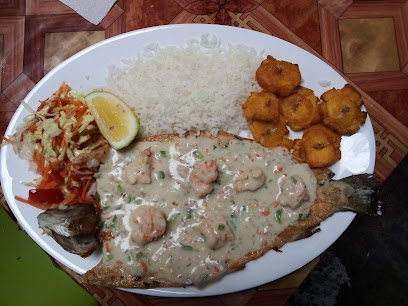
Local Phrases about Papallacta Hot Springs
-
- Hello¡Hola!
[oh-lah] - Goodbye¡Adiós!
[ah-dee-ohs] - YesSí
[see] - NoNo
[noh] - Please/You're welcomePor favor/De nada
[pohr fah-vohr/deh nah-dah] - Thank youGracias
[grah-see-ahs] - Excuse me/SorryDisculpe/Lo siento
[dees-kool-peh/loh see-ehn-toh] - How are you?¿Cómo estás?
[koh-moh ehs-tahs] - Fine. And you?Bien. ¿Y tú?
[byen. ee too] - Do you speak English?¿Hablas inglés?
[ah-blahs een-glehs] - I don't understandNo entiendo
[noh ehn-tee-ehn-doh]
- Hello¡Hola!
-
- I'd like to see the menu, pleaseMe gustaría ver el menú, por favor
[meh goos-tah-ree-ah behr ehl meh-noo, pohr fah-vohr] - I don't eat meatNo como carne
[noh koh-moh kahr-neh] - Cheers!¡Salud!
[sah-loohd] - I would like to pay, pleaseMe gustaría pagar, por favor
[meh goos-tah-ree-ah pah-gahr, pohr fah-vohr]
- I'd like to see the menu, pleaseMe gustaría ver el menú, por favor
-
- Help!¡Ayuda!
[ah-yoo-dah] - Go away!¡Vete!
[veh-teh] - Call the Police!¡Llama a la Policía!
[yah-mah ah lah poh-lee-see-ah] - Call a doctor!¡Llama a un médico!
[yah-mah ah oon meh-dee-koh] - I'm lostEstoy perdido
[ehs-toy pehr-dee-doh] - I'm illEstoy enfermo
[ehs-toy ehn-fehr-moh]
- Help!¡Ayuda!
-
- I'd like to buy...Me gustaría comprar...
[meh goos-tah-ree-ah kohm-prahr] - I'm just lookingSolo estoy mirando
[soh-loh ehs-toy mee-rahn-doh] - How much is it?¿Cuánto cuesta?
[kwan-toh kwehs-tah] - That's too expensiveEso es demasiado caro
[eh-soh ehs deh-mah-see-ah-doh kah-roh] - Can you lower the price?¿Puede bajar el precio?
[pweh-deh bah-hahr ehl pree-syoh]
- I'd like to buy...Me gustaría comprar...
-
- What time is it?¿Qué hora es?
[keh oh-rah ehs] - It's one o'clockEs la una
[ehs lah oo-nah] - Half past (10)Y media
[ee meh-dee-ah] - MorningMañana
[mah-nyah-nah] - AfternoonTarde
[tahr-deh] - EveningNoche
[noh-cheh] - YesterdayAyer
[ah-yehr] - TodayHoy
[oy] - TomorrowMañana
[mah-nyah-nah] - 1Uno
[oo-noh] - 2Dos
[dohs] - 3Tres
[trehs] - 4Cuatro
[kwah-troh] - 5Cinco
[seen-koh] - 6Seis
[says] - 7Siete
[syeh-teh] - 8Ocho
[oh-choh] - 9Nueve
[nweh-veh] - 10Diez
[dyehs]
- What time is it?¿Qué hora es?
-
- Where's a/the...?¿Dónde está...?
[dohn-deh ehs-tah] - What's the address?¿Cuál es la dirección?
[kwal ehs lah dee-rehk-syon] - Can you show me (on the map)?¿Puedes mostrarme (en el mapa)?
[pweh-dehs mohs-trar-meh (ehn ehl mah-pah)] - When's the next (bus)?¿Cuándo es el próximo (autobús)?
[kwan-doh ehs ehl prohk-see-moh (ow-toh-boos)] - A ticket (to ....)Un boleto (a ....)
[oon boh-leh-toh (ah)]
- Where's a/the...?¿Dónde está...?
History of Papallacta Hot Springs
-
Long before European explorers arrived in South America, the area around Papallacta Hot Springs was inhabited by indigenous communities. The thermal waters were revered by these early settlers for their healing properties. They believed that the hot springs were a gift from the gods and used them for both relaxation and medicinal purposes.
-
The Incan Empire, which expanded into modern-day Ecuador in the 15th century, also recognized the value of Papallacta Hot Springs. The Incas incorporated the hot springs into their network of sacred sites. They constructed stone baths and channels to harness the geothermal waters for ritualistic and therapeutic uses.
-
During the Spanish Conquest in the 16th century, the Spanish settlers discovered the thermal springs. Despite their initial suspicion towards indigenous practices, the Spaniards soon embraced the hot springs for their reputed health benefits. The Spanish colonial period saw the construction of more permanent bathing facilities to accommodate the growing number of European visitors.
-
Papallacta is not just about its hot springs. The region is part of the Cayambe-Coca National Park, a protected area known for its rich biodiversity. The park encompasses cloud forests, volcanic landscapes, and glacial lakes. The thermal waters themselves are a result of volcanic activity from the nearby Antisana Volcano, showcasing the geological dynamism of the region.
-
In the late 20th century, Papallacta Hot Springs underwent significant development to cater to the burgeoning tourism industry. New facilities, including luxurious spas, hotels, and restaurants, were built to provide a more comfortable experience for visitors. Despite these modernizations, efforts have been made to preserve the natural beauty and ecological integrity of the area.
-
The local communities in and around Papallacta celebrate several cultural festivals throughout the year. These festivals often include traditional music, dance, and food, providing visitors with a glimpse into the rich cultural heritage of the region. The hot springs themselves are sometimes central to these celebrations, highlighting their enduring significance in local traditions.
Papallacta Hot Springs Essentials
-
Papallacta Hot Springs is located approximately 67 kilometers east of Quito, the capital of Ecuador. The most convenient way to get there is by car, which takes around 1.5 to 2 hours. You can rent a car in Quito or arrange for a private transfer. Alternatively, public buses travel from Quito to Papallacta, departing from the Quitumbe Bus Terminal. The bus ride takes roughly 2.5 to 3 hours. Make sure to verify the schedule ahead of time, as departures may vary.
-
Once in Papallacta, the main attractions, including the hot springs, are within walking distance. For exploring nearby areas, taxis are available, though it's advisable to arrange them in advance through your accommodation. There are no local public transportation options within the small village. Renting a car offers flexibility for visiting surrounding natural attractions such as the Cayambe-Coca Ecological Reserve.
-
Ecuador uses the US Dollar (USD) as its official currency. Credit cards are accepted at most hotels, larger restaurants, and the hot springs facility. However, it is recommended to carry cash for smaller establishments and local vendors. ATMs are scarce in Papallacta, so it is advisable to withdraw sufficient cash in Quito before your trip.
-
Papallacta is generally a safe destination for tourists. However, it's important to practice standard safety precautions. Avoid walking alone at night and be cautious with your belongings in crowded areas. While there are no specific high-crime areas targeting tourists, always stay vigilant. Ensure your accommodation has secure storage for valuables.
-
In case of emergency, dial 911 for immediate assistance. Papallacta has a small medical facility for basic healthcare needs. For more serious medical issues, the nearest major hospital is in Quito. It is highly recommended to have travel insurance that covers medical emergencies. Pharmacies in Papallacta are limited, so bring necessary medications with you.
-
Fashion: Do wear comfortable and weather-appropriate clothing. It can get chilly, so bring layers and a waterproof jacket. Avoid overly revealing attire. Religion: Do respect local customs and traditions, especially if visiting nearby churches. Cover your head and dress modestly. Public Transport: Do be respectful and patient on public buses. Don't eat or drink on buses. Greetings: Do greet people with a friendly 'Hola' or 'Buenos días/tardes.' A handshake is common. Eating & Drinking: Do try local delicacies and enjoy the fresh trout, a specialty in Papallacta. Don’t refuse hospitality, as it is considered impolite.
-
To experience Papallacta like a local, visit the small local markets and interact with vendors. Engage with locals who are often willing to share stories about the area's history and culture. Take time to explore the natural trails around the hot springs for stunning views and unique wildlife. Don’t miss the opportunity to try the traditional Andean steam baths, a cherished local wellness practice.
Nearby Cities to Papallacta Hot Springs
-
Things To Do in Otavalo
-
Things To Do in Mindo
-
Things To Do in Ibarra
-
Things To Do in Tena
-
Things To Do in Ambato
-
Things To Do in Pasto
-
Things To Do in Macas
-
Things To Do in Guayaquil
-
Things To Do in Manta
-
Things To Do in Cuenca
-
Things To Do in Popayán
-
Things To Do in Salinas
-
Things To Do in Loja
-
Things To Do in Cali
-
Things To Do in Neiva


